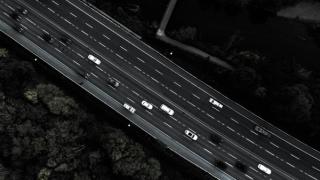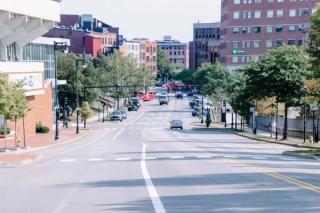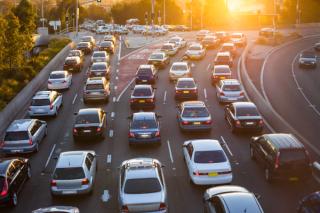
Spring Street redesign
- Client Name
- City of Portland
- Location
- Maine, USA

Challenge
The Spring Street Arterial had been constructed only to move high volume of traffic through the city at high speeds. The four-lane, divided highway environment was not only inhospitable to pedestrians, but it also lacked connectivity to the contextual urban fabric: the neighbourhoods, side streets, and downtown businesses and services. Over the decades, these factors exacerbated typical development opportunities as buildings gave way to vast parking lots, parking garages, and a large civic center.
Solution
The City of Portland is fortunate to have a very engaged community of residents, business owners, organizations, institutions, and advocacy groups. The Spring Street Redesign project was born largely through their activism and desire for a pedestrian-centric urban environment. As such, the redesign effort involved ongoing discussions and close coordination with the City planners, numerous critical stakeholders, and the community-at-large to ensure that the design captured opportunities and met desired outcomes.
While the City’s conceptual design provided the aspirational goal for corridor redevelopment, SLR’s work included significant traffic data collection, modelling, and design refinements to ensure that the end result provided acceptable functional value for all modes of traffic. Our “Complete Streets” approach also included urban design improvements to create a desirable destination that would be physically, contextually, and visually integrated into Downtown Portland and sensitive to the adjacent historic landmark buildings.
Because the Maine Department of Transportation (DOT) planned to repave Spring Street in the 2015 season, SLR closely coordinated the design, schedules, budget, and scope of work with the Agency.
Impact
With the completion of the first phase of construction in 2015, Spring Street now safely supports pedestrian and bicycle use and is fast becoming a vibrant street reflective of the City’s character and sense of place. The re-balancing of the roadway introduced traffic calming to enhance pedestrian safety and expanded sidewalks and streetscape opportunities. These improvements have fostered new investment and activities, from food trucks to the pending conversion of empty parking lots to new buildings with shops, offices, and residences. The City plans to align the remaining phased improvements in conjunction with investment and redevelopment along the corridor.

